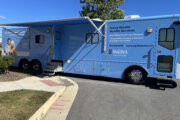Investors torn between stocks and bonds can have it both ways. They can split their money between the two, buy a fund that holds both, or choose preferred stocks that have bond-like features.
And then there are convertible bonds, which can be turned into stocks if that’s more profitable.
“Convertible bonds offer higher levels of income than common stocks, but at the same time can deliver greater potential returns over time than traditional bonds, as they capture some of the volatility of the equity markets,” says Jon Ulin, managing principal of Ulin & Co. Wealth Management in Boca Raton, Florida.
Some experts say convertible bonds can be a good choice today, because they don’t lose as much value as ordinary bonds when interest rates climb.
[See: 7 Bond Funds to Buy as Rates Rise.]
“Converts typically perform very well in periods of rising interest rates,” says Kris Haber, chief operating officer at Advent Capital Management, a New York City-based firm that specializes in convertible bonds.
During the past 25 years convertible bonds have done better than other fixed-income investments during periods when yields on 10-year Treasurys have increased by at least one percentage point, he said.
“The convertible market is having the strongest start to the year in over a decade with $24 billion of new issuance through March 26,” Haber says.
Ulin says convertible bonds are useful for investors seeking income, protection of principal and gains from a rising stock market. “In today’s new economy, where retirees get paid about zero for cash, but do not want all of the up or downside of stocks, convertible bonds deliver the goods in all three areas,” Ulin says.
Still, there are some risks aside from those faced with any bond, says Richard Perkin, vice president at Wolverine Investments in Westport, Connecticut.
“The convertible market is generally less liquid than equity markets [and] investors should be mindful of this when looking to buy or sell, especially in fast-moving markets,” Perkin says, adding that trading costs can be high.
Companies issue convertible bonds for various reasons. While selling more stock suggests the firm thinks its shares overvalued, convertible bonds aren’t seen that way. A convertible bond from a risky firm assures investors of more protection against loss than they’d get with stock, while the conversion right gives them a chance to make more than with a bond if share prices rise.
Also, convertible bonds can be an inexpensive way for a firm to raise money, since the conversion right induces investors to settle for a lower bond yield.
“As rates move higher, companies seeking capital at lower borrowing costs may find convertible structures increasingly attractive versus traditional corporate debt,” says Chris Kim, chief investment officer at Tompkins Financial Advisors in Ithaca, New York.
In a typical case, the investor has the right to convert the bond to a given number of shares with no further approval from the issuer once certain conditions are met, like passage of time. The investor can decide whether to continue receiving interest earnings, plus return of principal when the bond matures, or to convert to shares, which may already have gone up in value. The convertible feature is like a stock option attached to the bond, allowing the owner to choose the preferred mix of return and risk.
[See: Warren Buffett’s 8 Favorite Stocks.]
The stock option tends to become more valuable when markets are volatile, as they are today, Haber says.
Bond investors must always face interest-rate risk, when prices of previously issued bonds fall because newer ones pay more. But Haber says two factors make convertible bonds less sensitive to this risk.
First, the stock conversion option tends to gain value because rate increases typically come when the economy is strong and share prices are going up. Second, a convertible bond tends to have a shorter duration than an ordinary bond with the same maturity. Duration, expressed in years, describes how much a bonds’ price is likely to change with every one-percentage point change in prevailing rates. So a bond with a four-year duration would fall 4 percent with a 1 percent rate increase.
“The implied duration risk of a defensive convertible portfolio, with an average life of four to five years, is about two years, or 50 percent less than an equivalent straight bond portfolio,” Haber says.
Kim says convertible bond yields and risks sit between investment-grade bonds and high-yield bonds.
“Historically, defaults in the U.S. convertible market have been much lower than traditional high yield,” he says. “From 2003 through 2016, convert defaults averaged around 1 percent, where high yield averaged around 4 percent.”
Investors can buy convertible bonds through a full-service broker, hire an advisor to pick bonds, or buy an exchange-traded fund.
Experts say investors should keep a few things in mind:
Type of bond. “Plain vanilla” convertibles are straightforward, typically allowing conversion upon maturity, so the investor can take a given number of shares or receive a return of bond principal. “Mandatory convertibles” require the bond be converted to shares when it matures, causing a loss if the share price has dropped. “Reverse convertibles” generally pay a higher coupon but are riskier because the investor is exposed to potential loss from a falling stock price without having a guaranteed principal return on maturity.
Many other variations exist as well, making it essential for the investor to know the bond’s features.
What are you betting on? Are you hoping the share price will climb? If so, why not buy the company’s common stock instead? If you are looking forward to interest earnings, why not look for an ordinary bond that pays more than convertibles?
Other risks. Though the return of principal offers some safety, you may get nothing if the company founders. Also, as with ordinary corporate bonds, changes in the company’s credit rating, and in prevailing interest rates, can cause convertible bond prices to rise and fall before maturity, adding risk if you may need your money back early.
“The attributes of convertibles may differ considerably and a specific convertible may be more equity-like at certain periods and more fixed-income-like in others,” Kim says.
[See: 9 ETFs for Nervous Investors.]
Ulin agrees that investors need to take care: “Consider that this hybrid approach to bonds and stocks in one package could also lose significantly more of your principal during a market crash than a traditional bond investment.”
More from U.S. News
7 of the Best Stocks to Buy for 2018
20 Awesome Dividend Stocks for Guaranteed Income
The Top 10 Investment Portfolio for Millennials
Investors Don’t Have to Choose Between Stocks and Bonds originally appeared on usnews.com







